We all know Gaga loves her wigs, but she also dabbles with clothes that resemble wigs, as with this LaVer dress she recently wore to a taping of The View:
Gaga on The View, May 2011 |
LaVer couture hair dress, 2010 collection |
Since medieval times, locks of hair have been given to lovers as amulets, and the Victorians wove hair of the deceased into jewelry (more on fashion and mourning). These customs reveal the sentimental properties we imbue hair with (in a way we do not imbue, say, fingernail clippings or dead skin), as a representation of a greater spiritual, emotional, and sensual body.
Hair is one of those components of the body that has a split personality: one the one hand, it’s a sensual symbol of youth, fertility and sexuality; on the other hand, when it is removed from its proper (that is, expected) source, it becomes something horrible and icky (in a tub drain, on your clothes, etc.). Alexander McQueen tapped into both the marvelous and the macabre associations of hair (specifically that Victorian prostitutes would sell theirs for kits of hair locks, which were bought by people to give to their lovers#) by sewing clear packets of neatly coiled tufts of hair into the linings of his garments as his signature label; in early collections, it was his own hair:

Alexander McQueen hair label
While hair from a loved one may conjure desire, longing, or melancholy (relatively benign emotions), a clump of unfamiliar hair is typically met with repulsion. Kate Kretz explored the comfort, familiarity, sentimentality, and seemingly contradicting uneasiness displaced hair elicits from us by embroidering human hair directly onto a pillowcase; the hair could just as easily be a blood stain, so wrong does it seem, severed from the body that produced it (imagine laying your face onto that!):

“My Young Lover,” 2005 by Kate Kretz
Humans are obsessed with caring for the hair on our heads (the hair product isles in any drug store is testament to that), and equally obsessed with removing hair from “undesirable” places (legs, underarms, bikini areas, backs, chests). Body hair on women has been considered undesirable in many cultures for millenia. Since the great Ancient Egyptian and Middle Eastern cultures, women having been mixing their own version of Nads (a sugary depilatory, if you haven’t seen the hilarious infomercials) and home-brewed bleaches to remove and conceal unwanted facial and body hair: golden razors were even found in the tomb of Egyptian Queen Hetepheres (so she could shave in the afterlife?).
Simply moving hair from a “desirable†location (head, eyelashes), to an “undesirable†one (anywhere else) grosses most of us out. Lady Gaga loves to push the boundaries of psychological comfort, and she revels in the sartorial social statement. To wit, in performances of her new song “Hair,†she has been appearing in a series of dresses made entirely of hair extensions (frequently matched to her wigs). In her recent performance of “Hair†on the Paul O’Grady Show, she wore a bald cap over her natural mane while serenading her wig (which matched her hair dress), and put it on halfway through, to compliment the chorus “I am my hairâ€:

Gaga on Paul O’Grady Show with dyed hair dress by Charlie Le Mindu, June 2011
The piano itself is covered with a textile of darker, curlier fake hair that looks not unlike Alexander McQueen’s synthetic hair coat from a decade ago:

Alexander McQueen “Eshu” collection, Fall/Winter 2000-01
Words like “freak†and “free†appear in Gaga’s “Hair†and also the song “Hair†from the ‘60s musical Hair, as well as an ambiguous social agenda that is nonetheless important to the singers, embedded within their respective ‘dos (long and natural as in Hair, or long and fake for Gaga). Each song’s lyrics refer to parental disapproval, judgement from the public, and an overwhelming urge to fight this prejudice against nonconformist appearance, with hair as the symbol of individuality.
At a Good Morning America Summer Concert, Gaga shared with the audience, “People used to make fun of me for my wigs, and I’m just telling you without my wigs I feel like I can only be one person and I want to be so many.†She then proceeded to don not one, but several wigs over the course of the song.
Compare Gaga’s blonde hair dress and blonde wig to Maison Martin Margiela’s hair dress from a couple years ago:
 Gaga in blonde hair dress, October 2010 |
 Maison Martin Margiela, SS09 |
Like Gaga, Margiela also paired the wig jacket with a wig of identical false hair that tumbles into the garment, burring the boundary between desirable (i.e. head) hair, and undesirable (i.e. body hair).
Until the last few decades with the emergence of the so-called “metrosexual,†men’s body hair has gone largely unnoticed and unregulated, while women’s body hair has been increasingly vilified: women’s shrinking underwear and swimsuit styles have corresponded to shrinking stylized pubic hair surface area. Compare this illustration from the original The Joy of Sex (published in 1972, a singular decade when body hair of men and women was encouraged to grow undisturbed), to this more recent photo of Gisele Bundchen in a bikini– Gisele’s pubic hair must be depilatoried to the size of a quarter for none to show:
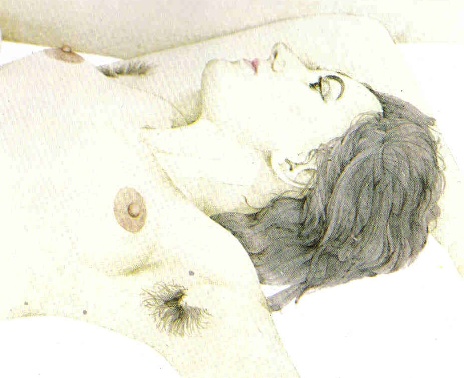 Joy of Sex underarm hair, 1972 |
 Gisele Bundchen |
The delightfully vulgar electroclash-y singer Peaches pushed the limits of “acceptable†female hair in her music video Set it Off. Over the course of the video, her hair grows– head hair and eyelashes, but also underarm hair, her treasure trail advances on her belly, and her pubic hair creeps down her legs. Gaga wore a similar merkin, underarm hair, and head wig in teal for a performance of Born This Way at the MuchMusic Awards:
 Peaches in “Set It Off” video; (excuse the terrible quality of the video still) |
 Gaga performing “Born this Way” at Much Music Awards, 2011 |
Beyond the pure gross factor (which in and of itself is satisfying, I think), by experimenting with hair dresses and body hair wigs, Gaga contributes to this commentary on controlled female sexuality via (head) hair care and (body) hair removal / censorship.
Though her underarm and pubic hair is not usually depicted, Mary Magdalene of the Golden Legend is frequently portrayed with her (natural) hair so long that a) she can wash Jesus’ feet with it, and b) she can wear it as a flimsy dress of sorts. John the Baptist is also said to have worn a shirt of hair, though it is not his own (the itching was a perpetual, self-inflicted punishment):
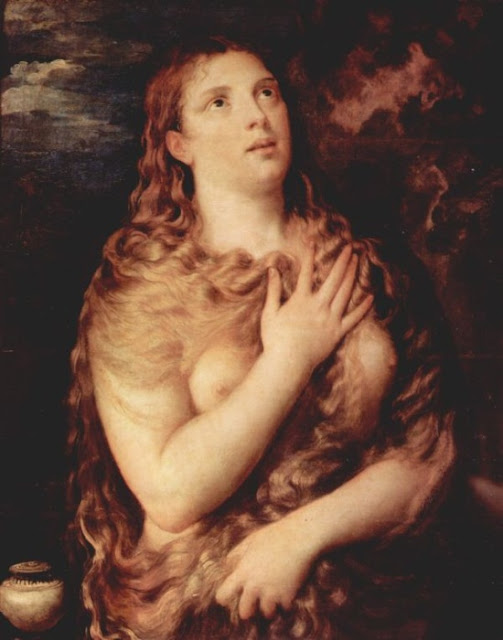 Penitent Mary Magdalene by Titian, c. 1530-1535 |
 Maesta: St. John the Baptist by Simone Martini, 15th century |
Roland at Gaga Stigmata previously wrote:
“In the collapsing of Biblical stories there are three Marys that are merged into a single figure: Mary of Bethany, Mary the Magdalene, and Mary the Prostitute. In Western Christianity (i.e. Catholicism), Mary is the redeemed prostitute who meets Christ, abandons her ways, and goes on to preach the Gospel to the idol-worshippers in Marseilles. Eventually, following the Golden Legend, she becomes a hermit. She resides in the desert, and every day is lifted by angels to receive nourishment from God. While she originally wears a hair shirt (or simply covers herself with her long flowing hair), in artistic representations her hair shirt is sometimes depicted as actual body hair.â€
Mary’s hair is a symbol of her sex’s sensuality, an instrument of charity and redemption, and it also hints at her profession’s presumed immodesty. Like Madonna, Gaga returns again and again to themes of religion and sex in her performances; as a prostitute-turned-Christian, Mary Magdalene literally embodies both. In the “Judas†video, Gaga places herself in Mary’s role (albeit not in hair dresses).
Mary Magdalene is a likely reference point in the phenomenal “hair sculptures†of stylist duo Gregory Dean (the first of which resembles Gaga’s LaVer dress, yes?). Note how the model’s ponytail merges seamlessly into her dresses, eradicating the boundaries between head and body tresses, “acceptable†and “unacceptable†hair, simultaneously rebellious, political, and irreverently religious:
 |
 |
I don’t know about you, but I kinda want one.

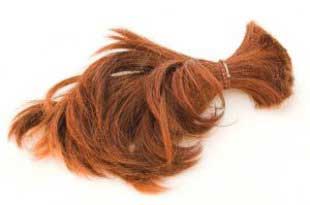
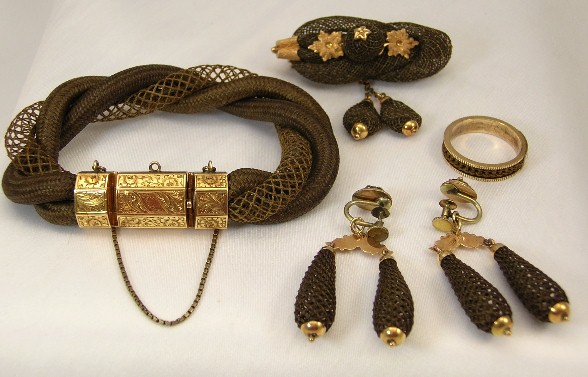

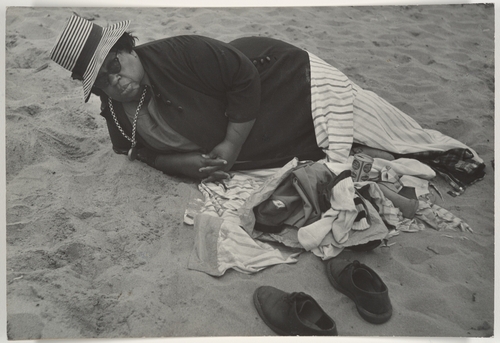

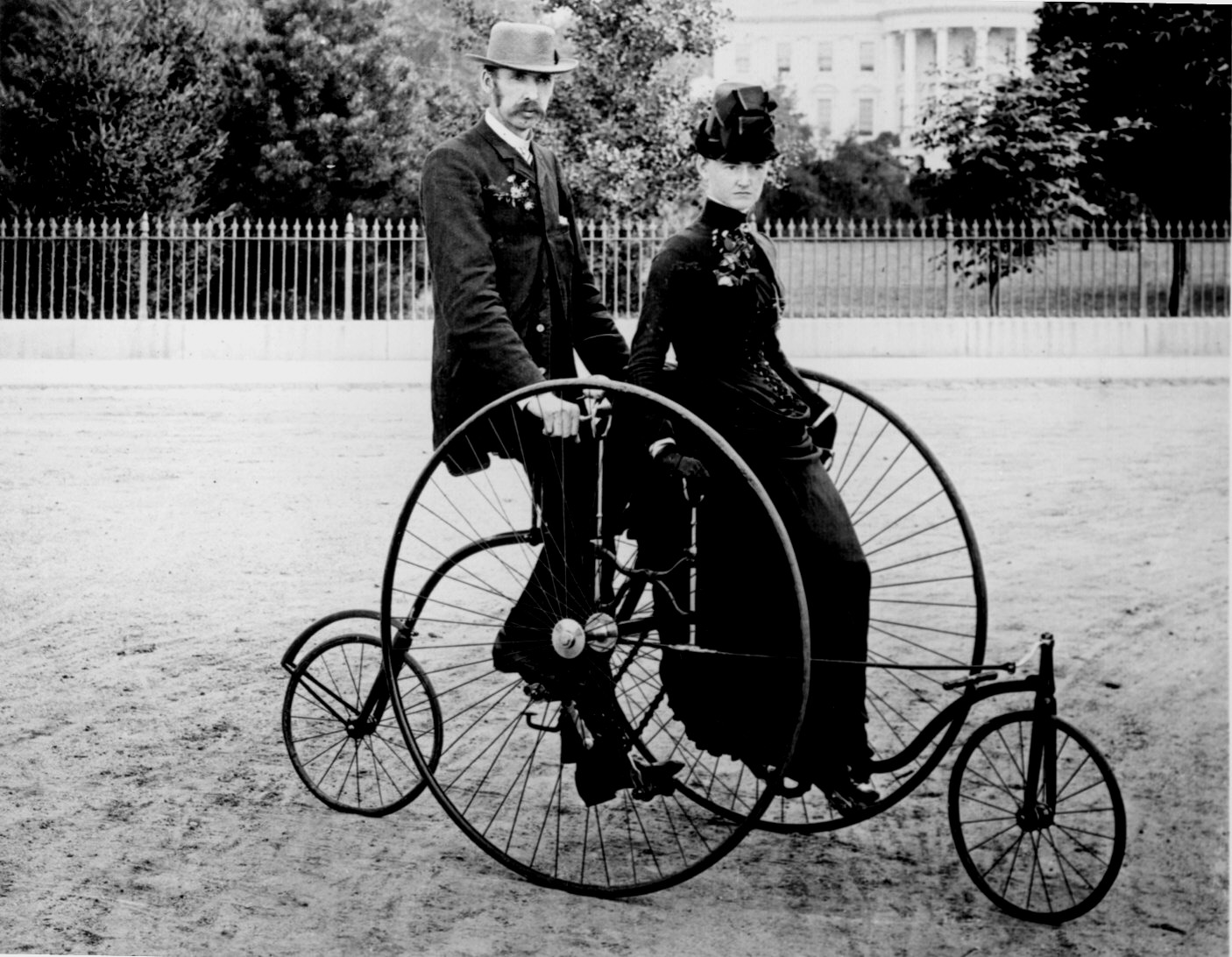

























1 comment
Matt Katz says:
Jul 20, 2011
I feel like this article is too short. I wish it went on longer.